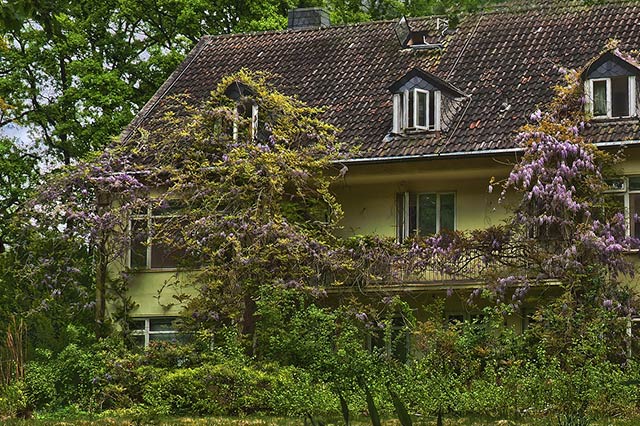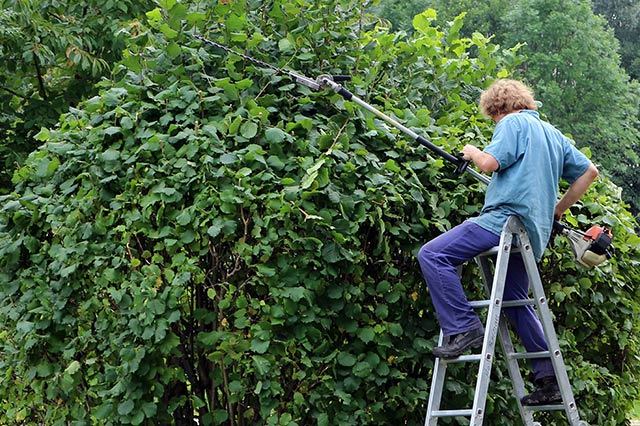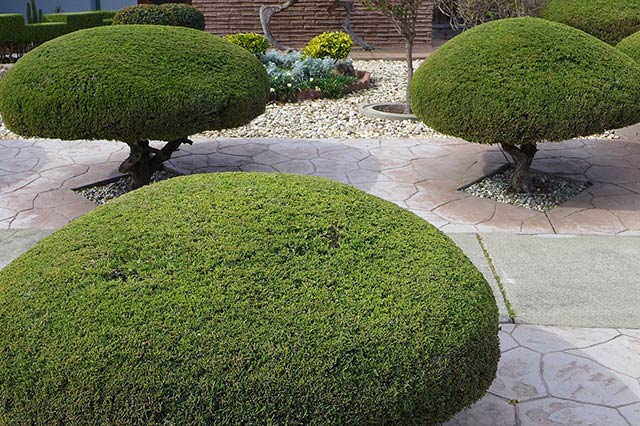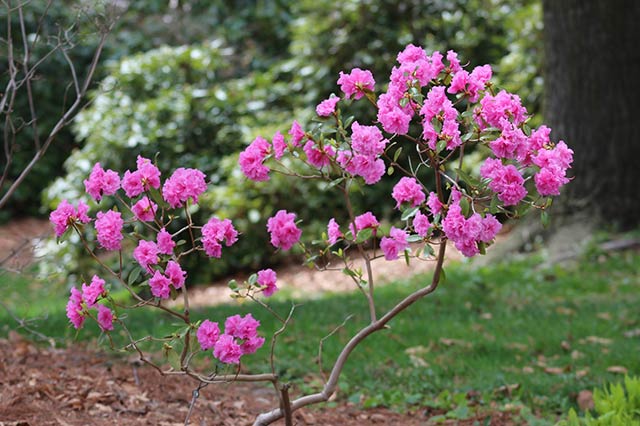Keep your yard from becoming an embarrassment with ugly, overgrown bushes. Knowing how to keep your bushes and shrubs from getting out of control will help you keep your yard looking magnificent and well-kept.

gardeninginfo-online.com gathered the following information and tips to help you keep your bushes and shrubs looking healthy and trimmed all year.
Trimming An Overgrown Bush
Pruning an overgrown bush also referred to as renewal or rejuvenation pruning, is a process that could take multiple growing seasons to fully accomplish. Consider the following for deciduous bushes:
When Is Pruning/Trimming Season – Late winter or early spring (before new growth emerges) is the optimal time to prune your bushes. Diseased, infested, or dead stems and branches should be cut away at any time of the year.
How Much To Prune? – Prune out the thickest stems close to the ground (thinning). This stimulates large bushes to produce new growth below the pruning cut, close to the ground.
Another method is to prune the bush into a small tree. You can do this by pruning out all of the stems except one central, sturdy stem. Remove the lower branches on the stem to leave a trunk and canopy.
Note: Unless you are grooming the bush into a small tree, don’t prune out more than one-third of the bush per growing season.
Tip: Only pruning the tops or sides of bushes will encourage them to grow taller, wider, and shabbier.

Severe Pruning – In late winter or early spring, unruly deciduous bushes can be cut back to 4 to 6 inches from the ground. Severe pruning like this induces a large number of shoots to develop from each stem during the growing season.
In the following late winter, examine the bush, select, and retain vigorous, healthy, well-shaped shoots. Remove all other shoots at ground level. The preserved shoots can be pruned from the top to encourage branching.
Many deciduous, flowering bushes can be pruned in this manner. However, cutting them this way may keep them from blooming for several years.
Tip: Repeated severe pruning can permanently damage or kill a bush. Bushes pruned in this manner should be given several growing seasons to recover their vigor before conducting further heavy/severe pruning.
For evergreen bushes, the pruning process is very different:
Evergreen Bush Anatomy – Evergreen bushes like American Arborvitae and junipers are significantly more challenging to prune without causing severe aesthetic damage. Evergreen bushes like these typically have a “dead zone” behind their outer foliage. These bushes cannot initiate new growth from the bare branches and stems in the dead zone.

When evergreen bushes with dead zones become unruly or overgrown, they should be removed and replaced by new ones. Trying to prune or shape these evergreens will likely end with the bush looking worse and unable to recuperate its fullness.
Evergreen Bush Pruning – For broadleaf evergreen bushes like rhododendron and mountain-laurel (without dead zones), late winter or early spring are the best times to prune. These bushes should be pruned:

- On the outer stems to maintain form
- Heavily (removing undesired stems) to encourage new growth
Note: If you want your bush to grow in a specific direction or close the gap between bushes, prune that area to encourage growth in that direction.
For evergreens with dead zones, only aesthetic pruning activities should occur. Removing too much foliage on these trees will leave empty patches the bush cannot fill.
Tip: You can avoid more difficult maintenance and/or removal by pruning your deciduous and evergreen bushes regularly. Annual pruning will also encourage them to grow healthy and full.
Overgrown Bush Trimming Tips
There are risks involved with trimming and pruning your bushes and trees. The following will help you minimize those risks:

- Perform all trimming and pruning activities with clean, sterilized equipment.
- Clean and sterilize your equipment between each plant.
- Make sure no overhead watering is performed before or after pruning activities (overhead watering quickly spreads pathogens from plant to plant).
- If you are treating a diseased or infested bush or tree, isolate the area and carefully remove affected branches and stems. You may need to hire an arborist to perform this pruning and offer suggestions to avoid reoccurrences.
- Take before and after pictures each season to compare your bush’s growth patterns. This will also reveal the effectiveness of your efforts.
Whenever there is a problem with disease or insect infestations, it is crucial to hire a professional to identify and properly deal with the issue. Issues like these can quickly spread, disrupting the health of the landscape as it goes.
Trimming and Pruning Overgrown Bushes
In this article, you discovered essential information about trimming and pruning deciduous and evergreen bushes, you also received vital tips about keeping your bushes healthy during these activities.
By following some simple trimming and pruning guidance, you can help your bushes grow healthy and full, and in the direction you want them to grow.
When you neglect annual pruning activities, your bushes can grow unruly. And if infested or diseased, they can cause the infection of your plants, bushes, and trees throughout your landscape.
Sources:
hgic.clemson.edu/factsheet/pruning-shrubs/
aggie-horticulture.tamu.edu/earthkind/landscape/proper-pruning-techniques/
extension.umd.edu/hgic/topics/pruning-shrubs-and-hedges
hortnews.extension.iastate.edu/2003/3-7-2003/pruneshrub.html
The post How To Trim Overgrown Bushes appeared first on http://gardeninginfo-online.com.
No comments:
Post a Comment